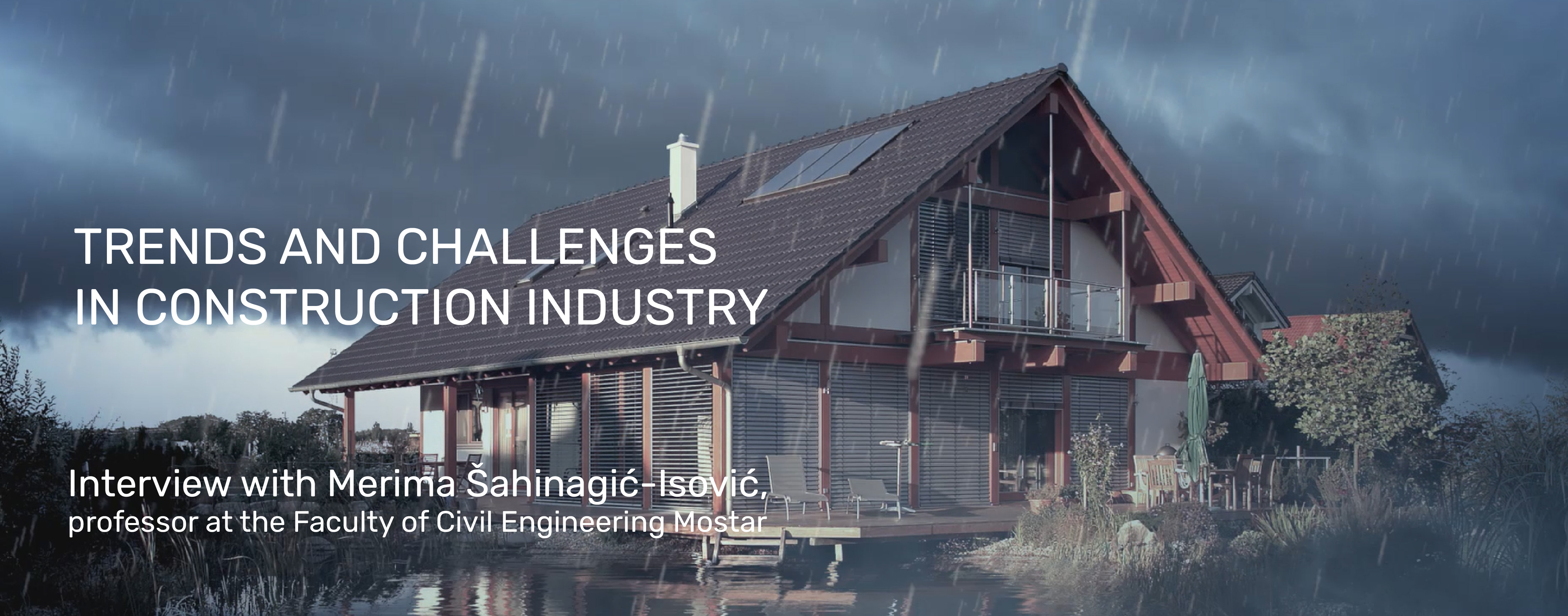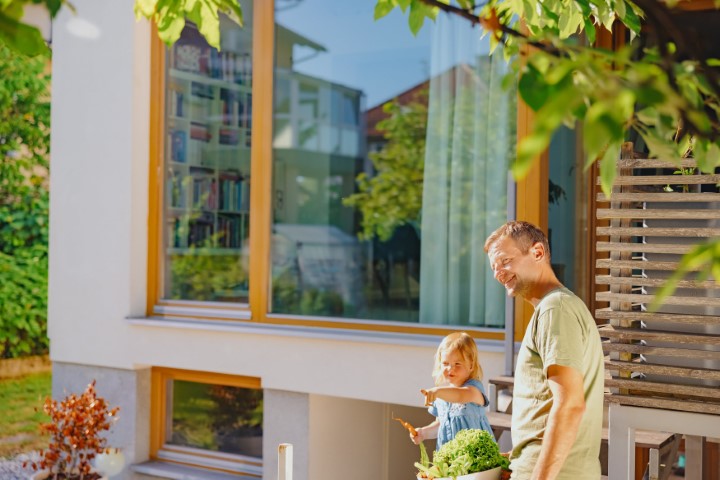Interview with Merima Šahinagić-Isović, full professor at the Faculty of Civil Engineering, University "Džemal Bijedić", Mostar, Bosnia and Herzegovina.
2/3 - Part two.
4. Awareness of the quality of the material and which materials will be used in the future
Contemporary construction practice, in accordance with the current concept of sustainable development, is increasingly addressing material recycling problems. Namely, a possible solution to this problem of solid waste accumulation is provided by the concept of sustainable development.
Recycling implies, in a general sense, the single or multiple use of waste material as an effective substitute for a commercial product, or as a raw material in an industrial process. In the construction industry, recycling represents the processing of construction waste and obtaining commercial raw materials of high quality, which can be further refined and placed on the market. In order to obtain such a secondary raw material, it is necessary to carry out a rational dismantling of the building, select the material and ensure a technically-technologically suitable plant, as well as quality control when receiving the material in the plant and during processing. Therefore, recycling converts waste building material into raw material.
Research in the world is aimed at solving the question of how construction waste can be optimally processed as a specific type of technological waste (parts of reinforced and non-reinforced concrete, bricks, tiles and other types of covers, plaster, various mixed excavations, asphalt, gravel and sand, stones, light construction materials), in order to obtain products as valuable as possible. Of course, the possibilities of applying the secondary raw materials thus obtained are also being investigated.
In general, the construction industry is relatively conservative, so changes in some established procedures take a lot of time and require long-term policies and strategies. By introducing economic instruments that encourage recycling and the use of recycled aggregate, economic barriers can be overcome.
In recent years, most developed countries have been actively engaged in the development of policies and a series of measures to reduce the depletion of natural resources, as well as foster the sustainability of their use through recycling, and have developed many alternative technologies for the production of recycled materials.
By passing appropriate legal measures, conducting the education of a part of the professional population, and educating the entire population, we should gradually try to increase the share of recycled construction waste in the application. EU member states stimulate the reuse of recycled material with additional incentives and many other regulations, and thus contribute to raising human awareness about the way waste is disposed of.
It can be concluded that it is indeed possible to successfully use recycled material in construction. Therefore, it is necessary to carry out permanent education as much as possible and to properly inform the public about all novelties in the construction industry, thus breaking down the barriers that construction engineers and investors have when applying all new ecologically justified products. This vigilance is, of course, also justified because without such a relationship to the characteristics of the new material it would not be possible to reach any correct conclusions on the implementation of all the necessary requirements.
However, it is necessary to invest all necessary knowledge and expertise on a continuous basis in order to use recycled materials to the greatest extent possible, thereby improving the construction industry and protecting the natural environment.
5. Sustainability is a broad concept that is too often used and misinterpreted. How do you see it in the construction segment
The terms "sustainability" and "sustainable development" have recently entered into various programmes, strategies, and reports. In 1987, the United Nations issued a report defining sustainable development as development that meets today's needs without jeopardizing the ability of future generations to meet their own needs.
Sustainable construction implies the application of the basic principles of sustainable development in the field of construction. Sustainable construction is certainly one of the most important segments of sustainable development and includes the use of building materials that are not harmful to the environment, the energy efficiency of buildings, and the management of waste from the construction and demolition of buildings. In the context of sustainable development, sustainable construction must ensure durability, but also the quality of structural design, with economic and environmental friendliness.
The field of application of sustainable development is practically inexhaustible, given that it is applicable to all types of human activity. It is the same in the field of construction, where the application of sustainable development operates on many levels, and one of them is the production and application of recycled materials, with a special emphasis on concrete.
In the field of sustainable development, the implementation of the well-known 3R principle (Reduce, Recycle, Renewable) is very important. This principle consists of and aims at the following:
- reduction of energy consumption and degree of pollution (Reduce),
- reuse of old concrete (Recycle),
- creation of aggregates for new concrete (Renewable resource).
6. How do you see the significance of building hardware in houses/buildings
Sustainable development and environmental protection have become key goals of modern society. Sustainable development is one of the few ubiquitous topics, it is becoming more relevant by the day, primarily because it is extremely important for modern society.
Sustainable construction can only be achieved by a turnaround in the planning and designing of the building phase, when it is possible to choose an appropriate construction concept and choice of materials, which are in accordance with the principles of sustainable construction and sustainable development in general.
Sustainable construction includes the use of building materials that are not harmful to the environment, as well as the energy efficiency of buildings. The concept of energy efficiency measures in family homes and residential and non-residential buildings refers to a wide range of activities whose ultimate goal is to reduce the consumption of all types of energy in the building in question.
Insufficient thermal insulation leads to increased heat losses in winter, then cold perimeter structures, and various damages caused by condensation (moisture), but also overheating of the space in summer. As a consequence, structural damage occurs, resulting in inadequate and unhealthy living and working conditions. Heating such spaces requires a greater amount of energy, which leads to an increase in the cost of using and maintaining the space while also increasing environmental pollution. Environmental pollution, again, has an impact on damage to buildings, but also on people's lives and health.
Renovation of the roof above the heated space, i.e. the ceiling of the last floor towards the unheated attic, significantly reduces heat losses. Repairing the floor in contact with the ground in an existing house is often not economically justified, due to the relatively small reduction in total heat losses compared to the large investment required for such repair.
However, it should be emphasised that the greatest heat losses occur through the windows and the outer wall, and that restoring them can result in significant savings. Heat losses through the windows and the outer wall account for an average of 70% of the total heat losses in the building. A fact that speaks for itself about the importance of using quality materials, as well as the performance of all product elements used in facilities (buildings, houses, etc.). It is undeniable that in the production of quality windows and doors, the quality of window hardware is an extremely important segment that needs special attention.
To be continued...



 EN
EN  SL
SL  HR
HR  IT
IT  SR
SR  BG
BG  BS
BS  RO
RO  DE
DE 
